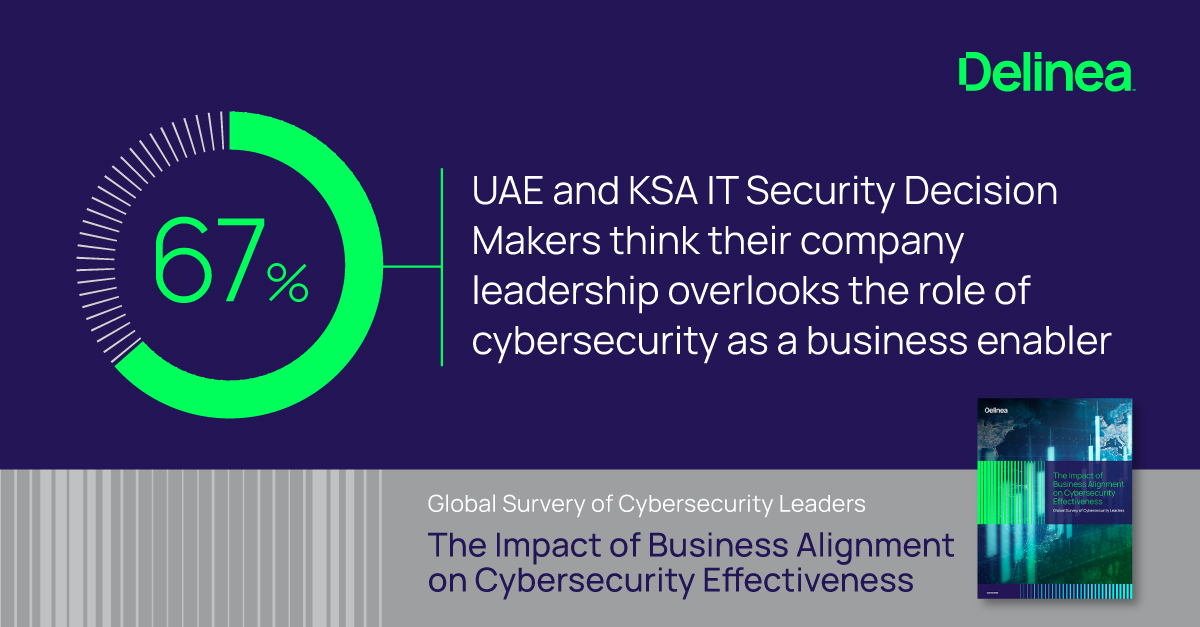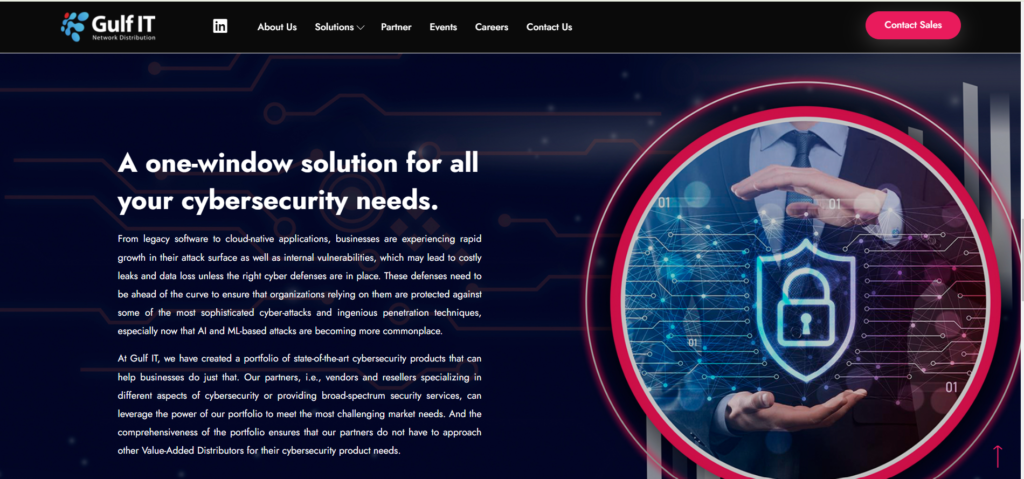30 Handy Tips For Choosing A Cybersecurity Company in UAE
30 Handy Tips For Choosing A Cybersecurity Company in UAE
Blog Article
Top 10 Tips To Assess The Experience And Qualifications Of A Cybersecurity Service Company Located In Dubai, Uae
1. Check Professional Certifications for Professionals. Start with an examination of the qualifications used by employees. Look for certifications such as copyright Security Professionals(copyright) or Certified Information Security Managers(CISM), Certified Ethical Hackers(CEH) or copyright Auditors (CISA). These certifications show a superior level of expertise and dedication to the highest standards.
Review Team Experience
Examine the general experience of team members. You can inquire about their previous roles, their experience, and how long they've been in the cybersecurity industry. A team of experts with diverse experience across various industries can offer an array of perspectives and solutions to cybersecurity problems.
3. Verify Your Education Background
Check the qualifications of the key employees. Graduate degrees in information technology or computer science can show a good foundation in the area. Higher education qualifications coupled with professional certificates can boost credibility.
4. Analysis of Specialization Subjects
Identify any specific areas of specialization for team members. Expertise in areas such as cloud security, network security, application security, or data protection can be beneficial depending on your business's requirements. Expertise in specific areas will allow you to provide more effective solutions when it comes to cybersecurity concerns.
5. For more information on ongoing training and Development
The company needs to be rated on its commitment to continuous training and professional development. Cybersecurity is an ever-changing area, and ongoing training through seminars, workshops and other certifications is crucial to keep current with the latest technology.
Review Past Projects or Case Studies
For more details, inquire about previous projects or case-studies which showcase the company's experiences. The capability of the company to tackle issues and its effectiveness is determined through the way they present how they tackled cybersecurity challenges for prior clients.
7. Request client testimonials as well as references and reviews.
It is essential to gather testimonials and recommendations from clients who have been able to vouch for the company's performance and experience. Positive reviews from clients will demonstrate a positive reputation for the company and also the capability of the business to provide top-quality services.
8. Investigate the role of industry in promoting
Take into consideration the company's involvement in the community of cybersecurity. Participation of the company in cybersecurity events, webinars, conferences as well as publications published by the industry can demonstrate the company's commitment to keeping up with the latest trends.
9. Examine Research and Development Initiatives
Ask the company to determine if they invest in R&D to improve their cybersecurity services. Research and development-oriented companies are usually on the cutting edge of developing new technologies and innovative solutions. They can supply clients with new cybersecurity solutions.
10. Locate Awards and Recognition
Finally, take a look at any awards or other recognitions that have been received by the company in the cybersecurity sector. Industry awards can indicate the quality of service and dedication to providing top-quality services. This will enhance a company’s credibility and reputation. Check out the most popular Cybersecurity Company in UAE for site recommendations including it security description, security on website, info security, digital security, it security jobs, ai and cybersecurity, information security logo, cybersecurity firms, cybersec consulting, cyber security in usa and more.
Top 10 Tips For Evaluating The Capabilities Of Incident Reaction For An Organization That Provides Cyber Security Services
1. Understand Incident response FrameworkBegin by examining the incident-response framework used by the company. A clearly defined framework, such as the NIST Cybersecurity Framework or the SANS Incident Response Process, ensures that the company is following the best practices of the industry for handling incidents effectively. Make sure that the business has a defined approach to incident management.
2. Evaluate Incident Response Team Expertise
Consider the experience and qualifications that the members of your team's incident response personnel are certified with. You can look for certifications such as Certified Incident Handler GCIH or copyright Security Professional copyright. It is important to work with a team that is knowledgeable and has expertise to manage and mitigate incidents.
Review the past Incident Case Studies
You can also request case studies or other examples from the firm of prior incidents they've managed. Reviewing the response of their employees to realistic scenarios can give valuable insight into their efficiency and speed in managing incidents. Find out how they managed to control and solve incidents by reading their detailed reports.
4. Make sure you check for 24-hour Incident Response Availability
If the company provides round-the clock incident response, you should check. Cybersecurity-related incidents can happen at any moment. With a 24-hour team, you can minimize the impact and time to recover.
5. Request Information About Incident-Detection Tools
Assess the tools and technologies that the company uses for monitoring and detection of incidents. Effective detection tools, such as Security Information and Event Management (SIEM) systems as well as intrusion detection systems (IDS) are crucial to identify potential threats quickly and accurately.
6. Examine Communication Protocols
Investigate what communication protocols are used by the business during an emergency. It is essential to establish efficient and precise communication to coordinate responses as well as inform the stakeholders and ensure that everyone understands their duties. What can they do to keep customers updated throughout the response?
7. Review Post Incident Review Processes
Inquire as to the company's processes to review incidents. After an incident, thorough reviews can help identify areas of improvement as well as lessons gained. To improve future response efforts, look for businesses that have made changes in response to these reviews.
8. Evaluate Recovery and Remediation Strategies
Knowing the methods companies employ to repair and recover from an incident is important. Effective recovery plans should outline the methods they use to restore systems and data and make sure that weaknesses are fixed to prevent further incidents. You should ask about how they repair and secure systems following an incident.
9. Examine compliance with regulatory requirements
Check that your incident response capabilities is aligned to the regulations. In certain sectors, there may be specific requirements regarding incident reporting and response. It is important to find a business that knows these regulations to ensure compliance.
10. Ask for references and testimonials
Get references from customers who have used the incident response service of your company. Customer testimonials are an excellent way to gain valuable insight on the effectiveness of, reliability and satisfaction in response to incidents. See the best penetration testing dubai for website recommendations including cyber security info, information security logo, manage security services, network security technologies, cybersecurity consultancy, business and cybersecurity, information technology security, cyber security security, cyber security requirement, information security and more.
Top 10 Ways To Evaluate The Security Awareness Training Of A Cybersecurity Service Business
1. Examine the Training Content and begin with a review of information in the security awareness training. Make sure you cover the most important subjects, like the concept of phishing (social engineering), password security, compliance, and data protection. A thorough course is crucial to equip employees with the information they need to recognize and address possible threats.
2. Check Customization Options
A tailored training program will be tailored to meet the requirements of your company as well as its unique culture. Making the training customized to meet the specific challenges and scenarios that your employees face will enhance relevance and engagement. This results in higher retention.
3. Study the Methods of Training Delivery
Investigate the various delivery methods used for the training. You can choose to use online courses, webinars and interactive simulations. Mixing different formats will accommodate different styles of learning and increase overall effectiveness.
4. Interactive Elements
Check whether the training contains interactive elements, for example tests, simulations and real-world scenarios. Interactive training improves the retention and engagement of information, allowing employees to better use their skills in real-world situations.
5. Review frequency and updates.
Inquire about the frequency of the training sessions and the frequency at which the material is updated. Regular training sessions and updating the curriculum regularly are essential to ensure that employees are up-to-date with the latest threats and best methods.
6. Assess Measurement of Effectiveness
Find metrics like pre- and post-training assessments as well as feedback from participants, and incident reporting trends. Keep track of the metrics, like the post- and pre-training assessments as well as the feedback of participants or trends in the reporting of incidents. The evaluation of the program's effectiveness can help to determine its effectiveness as well as areas for improvements.
7. Check Certification and Completion
Find out if the program provides certifications upon the completion. Certificates are an excellent way to boost employee credibility and show that they've acquired the skills needed. Ensure that your training is aligned with any requirements of regulatory compliance that you may be required to meet.
8. Look for Testimonials and Refutations
Get feedback from companies who have utilized training previously. Testimonials offer insights into the efficacy of training and the way it was received by employees. Positive feedback is a sign of a good reputation for delivering effective awareness training.
9. Assess Post-Training Assistance
Find out about the support available following the completion of the course. Refresher courses, access to an information database, and newsletters can be utilized as resources to reinforce cybersecurity education.
10. Evaluation of Engagement and Culture Building
Finally, evaluate how the training program contributes to building the culture of security within your business. Consider initiatives like workshops, security newsletters or contests that foster the continuous monitoring of security. A strong security culture encourages employees take ownership in the protection of the organization. View the best iconnect for website examples including cybersecurity and technology, managed security services, information and security, it security usa, manage security services, technology and cyber security, network and systems security, network security solutions, ai in cybersecurity, network security and and more.